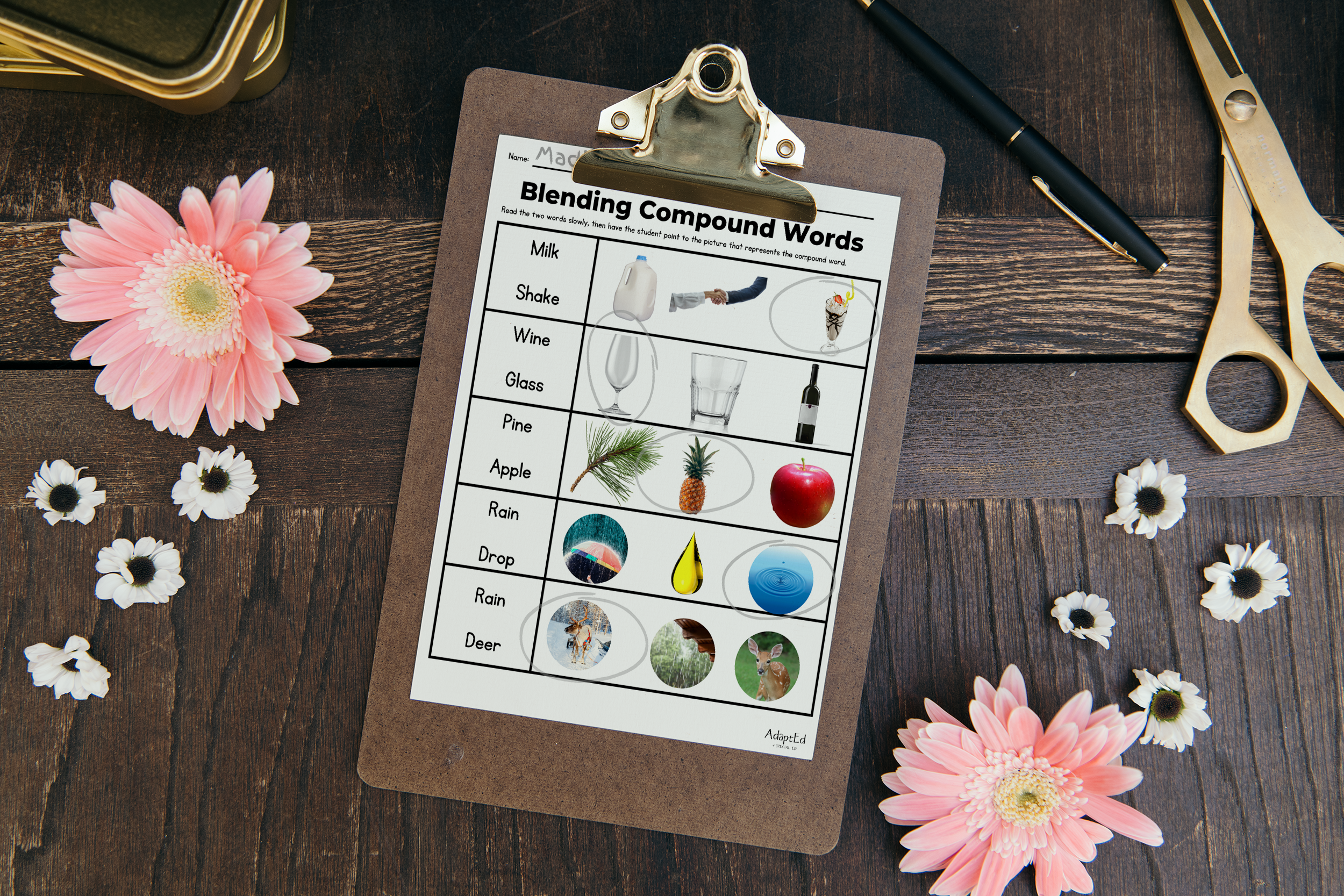Research in the science of reading has shown that compound words can be a valuable tool for introducing the concept of blending sounds to students who are non-verbal or have an intellectual disability.
According to a study published in the International Journal of Special Education, "Compound words provide a means for introducing phonics and decoding skills to students who are non-verbal or have intellectual disabilities" (D'Angelo & Hanson, 2017).
By breaking down a compound word into its individual parts, students can better understand how sounds combine to form words, even if they struggle with verbal communication.
Another study published in the Journal of Intellectual Disability Research found that teaching compound words was effective at improving phonological awareness skills in children with intellectual disabilities.
The researchers noted that "compound words offer an opportunity to break down longer words into smaller units and practice blending these units together" (Cologon et al., 2014).
Furthermore, learning about compound words can also help students with intellectual disabilities develop their vocabulary knowledge. As explained by literacy expert Dr. Karen Erickson in her book "Literacy Instruction for Individuals with Autism, Cerebral Palsy, and Other Disabilities," "Compound words provide opportunities for expanding vocabulary knowledge by building on familiar base words" (Erickson & Koppenhaver, 2007).
In summary, research has shown that teaching compound words is an effective strategy for developing phonemic awareness skills and vocabulary knowledge in students who are non-verbal or have an intellectual disability. By using tools such as our Compound Word Task Cards, educators can provide targeted instruction on this important topic and support their students' literacy development.
Sources:
- Cologon K., Cupples L., & Wyver S. (2014). A Systematic Review of Phonological Awareness Intervention for Children With Intellectual Disabilities: Evidence from Single-Case and Group Studies. Journal of Intellectual Disability Research, 58(2), 103–120.
- D'Angelo F., & Hanson R.A. (2017). Building Vocabulary Skills through Compound Words: Strategies for Students Who Are Nonverbal or Have Intellectual Disabilities. International Journal of Special Education, 32(3), 344–354.
- Erickson K.A., & Koppenhaver D.A. (2007). Literacy Instruction for Individuals with Autism, Cerebral Palsy, and Other Disabilities. Brookes Publishing Co.



